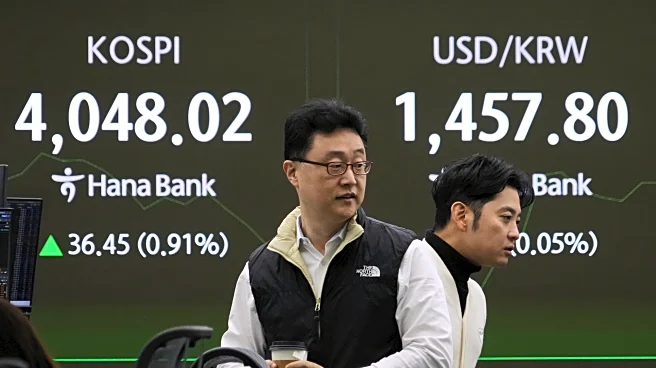What's Happening?
Manufacturers in the U.S. are significantly reducing their reliance on bank loans due to high interest rates, opting instead for alternative funding sources such as equities, corporate bonds, and retained
earnings. This shift has led to a 20.3% decrease in combined bank borrowings, dropping from N2.526 trillion in 2024 to N2.014 trillion in 2025. Consequently, the aggregate finance cost for these manufacturers has fallen by 52.8%, from N1.4 trillion to N662 billion. Despite the reduction in borrowing, the sector has seen a 37.9% increase in turnover, reaching N10.1 trillion, and a reversal from a loss position to a profit of N2.5 trillion in 2025. However, the cost of sales has surged by 57.9%, reflecting ongoing input inflation.
Why It's Important?
The shift away from bank loans highlights the impact of high interest rates on the manufacturing sector's financial strategies. By reducing reliance on expensive bank credit, manufacturers are able to lower finance costs, which can improve profitability and financial stability. This trend may lead to decreased income for banks, as they are traditionally major providers of working capital finance. The move towards alternative funding sources suggests a strategic adaptation to the current economic environment, potentially influencing future lending practices and financial intermediation. The rebound in profitability indicates macroeconomic stabilization and improved investor confidence, although the sector remains vulnerable to inflation and other economic pressures.
What's Next?
Manufacturers may continue to explore non-bank funding options to manage working capital needs, potentially leading to further declines in bank borrowings. Banks might face challenges in maintaining interest income levels, prompting them to seek alternative revenue streams such as government securities. Policymakers may need to address the disconnect between banks and the real economy by creating conditions that encourage affordable credit without exacerbating inflation. The sector's recovery, while promising, remains fragile, necessitating continued policy support to lower production costs and enhance competitiveness.
Beyond the Headlines
The strategic shift in funding sources reflects broader economic adjustments, including the potential for long-term changes in financial intermediation. The decline in bank borrowings may signal a shift in the role of banks in supporting industrial growth, raising questions about their future involvement in economic development. The rebound in profitability, while positive, may not fully capture real investment growth, underscoring the need for policies that foster sustainable economic expansion. The manufacturing sector's adaptation to high interest rates could serve as a model for other industries facing similar challenges.













